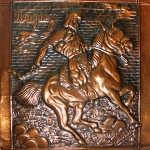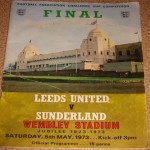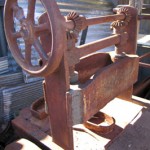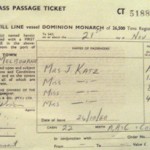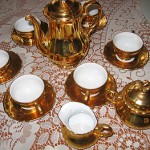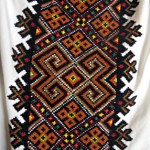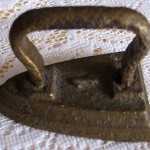(nee Diverio)
Uruguayan
Lavalleja, Uruguay
Montevideo, Uruguay on 16 October 1973
Sydney Airport on 20 October 1973
East Hills for one year
Rental property at Bankstown in SW Sydney
MacIllwrights factory at Milperra, near Bankstown, washing coppers
Sorting letters for MBF and administration and Ethnic Liaison Officer for Medibank – both in Sydney CBD; quality control for Aero Zippers in Bankstown; Community Options program with Liverpool Hospital advising Spanish-speaking people on how to utilise the public health system.
My name is Maria Emilia Pastore and I was born on 21 February 1938 in Lavalleja in Uruguay, which was about 200 kilometres from Montevideo. I was a very naive young girl as Uruguay was a very Catholic-oriented country and we were brought up quite strictly.
My mother had qualified as a teacher in Uruguay but never actually worked at it as my father preferred that she be at home caring for the children. My father worked in many parts of the country as a salesman so we did not see him too often. I had two sisters and a brother.
Our home was enormous and made of brick which had been cement rendered as was the Spanish style of our country. It was what is known as a claraboya, which means a large section of the ceiling [was] made of glass – something like a skylight. It also had an enormous patio [and] under was a reservoir for the collection of water which always tasted lovely, cool and pure. The house had six bedrooms but we needed that many as we had a large family unit. Apart from the six in our immediate family, we also shared the house with a widowed aunt and her son as well as two girls who helped with the housework. One girl was a cook and the other took care of the linen and the children.
I loved school and in Uruguay we had only to attend for four hours a day. I believe that we learnt more in four hours a day there than they do here in six. I went to public schools in Montevideo and all were co-educational. Only the private schools in Uruguay were segregated. At school I learnt French for four years and English for two. I did not learn enough English for me to be fluent in it as I found out when we arrived here. I went to teachers’ college [and] was only 18 when I qualified.
I met my husband-to-be when he came to visit my mother with one of his aunties. His name is Arturo Pastore and his father was an Italian who had migrated to Uruguay after World War Two. He worked as an assistant accountant but also did a course as an electrician. We were married when I was 23. We rented our first home and within a few years we had three children.
Uruguay was going through terrible political times and as a teacher I felt most vulnerable as many of my peers had already been killed, as were some of my pupils. What had been a really beautiful country had become one in which no-one wanted to live. It had been very rich in beef and wool but the economy was in a dreadful state. My husband found himself out of work and remained so for about three years. That was the beginning of our decision to come to Australia. We could have moved to Venezuela but thought that Australia was a ‘younger’ country and it may be better for us. My father had passed away so my mother decided to come with us as well.
In August 1973 we finally received permission for us all, including my mother, to come to Australia. We had been renting a flat so did not have the problem of selling. We left Uruguay completely committed. We would make a new home for ourselves in Australia. I told the children to look well at Montevideo as we left as we would not be returning there to live.
My favorite possession is my jumper which I have had since I left Uruguay. I bought it in Piriapolis, which is a lovely seaside town about an hour’s drive east of Montevideo and is a well-known tourist centre. The jumper is hand-knitted Manos Del Uruguay wool and is of the softest quality. I still occasionally wear it and would never think of parting with it.
I also brought a mate from Montevideo when we migrated. A mate is used in Uruguay, as it is in other South American countries, to infuse various teas and herbs in hot water and drink them using a straw-type apparatus. My mate is made from a hollowed out gourd and the ‘straws’ are made from copper. Some straws are made of silver. I also have an imitation mate which is made of silver which we also brought as a souvenir.
I also brought a copper plaque from Uruguay, which has been hand-beaten to show a man on a horse which is a design common to the country. It is beautifully made and I cherish it as a memory of my old country.
I bought the bamboo decoration at the Tristan Narvaja flea market which is a very colourful growers market held on Saturdays. All goods on sale are made or produced by local people. The decoration is hand-painted with the word ‘Uruguay’ on it, with nuts and seeds glued on. I brought it to Australia with me at the time of migration and it is a reminder of my life in Uruguay.
On 16 October 1973 we went by boat from Montevideo to Buenos Aires [in Argentina], from where we were to fly to Australia. There would have been about 300 of us to fly out on two planes. We went by Air France to Quito in Ecuador, from where we caught a plane direct to Sydney, except for a one-day stop in Nadi, Fiji. There had been some unexplained delays when we arrived at Nadi and that made us rather nervous as it was very hot and humid, but after eight hours we were on our way. We were to find later that the delay was caused [by] the arrival of the Queen of England who was to open the Sydney Opera House. Our arrival was on 20 October 1973 and Sydney Harbour was full of yachts and balloons. We could see it all from the plane windows as we flew over. It was all so exciting and we felt that it was a welcome for us as well as for the Queen.
We arrived at Mascot (Sydney Airport) to a temperature of about 30 degrees [centigrade]. They brought special buses to take us to East Hills hostel [in south-west Sydney], where we were greeted with lovely newly-built buildings. Someone had left the heater on in our unit, probably to ensure [it] would be dry for us, and it was almost 40 degrees inside. We did not know how to turn it off and I thought that my mother would die as she did not enjoy hot weather at the best of times.
The unit was self-contained and we loved it, [but] my mother did not want to live in a flat and also did not like having to go outside to the toilet at night, so we had trouble in finding a house with an inside toilet. We stayed there for a year before moving to a large rental house in Bankstown. After four years we moved to another house in Bankstown. We later moved to Canley Vale where we purchased a house and later still to this house, where we have lived since 2000.
My husband had found a job at MacIllwright’s at Milperra and I found a job in the same factory. The company prepared metal materials for construction, roofs, chimneys, all of those things. My job was washing out coppers which were used to boil clothes. That was before many families had washing machines. I was only there for about three months, then moved to Aero Zippers in Bankstown where I worked in quality control.
At that time I took a ten week course in English as I felt that was most important to assist in the raising and education of my children. Through this, the social worker at the hostel recommended a position for me at MBF (Medical Benefits Fund) in Sydney. There I worked in the correspondence section organising letters in alphabetical order. From MBF I moved to work at Medibank, starting with very simple tasks like checking the amount of benefits paid in each claim. My work was highly commended and due to my accuracy in figures, I was sent to work at the finance department. From there I was transferred to work at the enquiries counter, with a major priority to attend Spanish-speaking customers. That opportunity was great due to my concerns about the welfare of our community.
The experience I had gained prepared me for the position of Ethnic Liaison Officer when a new change in the health system was introduced by 1984. The work involved was to introduce Medibank system to arriving Spanish-speaking people at migrant hostels, English courses and community groups.
Since 1978 I was involved with a Spanish-speaking organisation formed to attend the needs of the most disadvantaged people of our community. The Spanish Latin American Association for Social Assistance (SLASA) formed with the help of volunteers from the Good Neighbours program. I was a member of the first management committee.
During the same year I was Secretary of the Overseas Teachers Association, dealing with the task of obtaining recognition for Spanish-speaking people who were primary school teachers in different countries. [It] was successful in the request for a bridging course to allow participants to be recognised [here].
By 1984 it was found that the people with need in social assistance were the aged. We thought to try uniting them in an association specifically for pensioners and the Spanish Speaking Pensioners’ Association was formed. I was Coordinator [when] the Association obtained funds to have ten units in Fairfield Heights [and I am] a member of its management committee.
By 1988 the Commonwealth Government created a program to allow elderly people to remain living at home [despite] the difficult chores they were not able to attend to due to their age and health limitations. The first Community Options program was established in Fairfield and I was in the first team, working with the assistance of the geriatric team of Liverpool Hospital.
I had worked within this program until 1998 when I happily retired to enjoy our seven grandchildren whose presence enlightens our lives.
Would I ever return to Uruguay to live permanently? No! We visited Uruguay in 1995, the first time since we migrated. Although it was very friendly and nice, we no longer relate to our friends’ situations. When you live too long in a new country the experiences acquired make you a different person, making you feel out of place in your own country.





!["I bought it at the Tristan Narvaja flea market held on Saturdays - all goods [there] are produced by local people. The decoration is hand-painted with the word ‘Uruguay’ on it, with nuts and seeds glued on. I brought it to Australia at the time of migration and it is a reminder of my life in Uruguay."](../../../cms/wp-content/uploads/2009/05/pastore-bamboo-150x150.jpg)
!["[It] is very old and hand-knitted in the softest Uruguayan wool called Manos Del Uruguay. I brought it with me from my old home and still wear it on occasions. I would never think of parting with it."](../../../cms/wp-content/uploads/2009/05/pastore-jumper-150x150.jpg)
!["The mate is made from a gourd which has been hollowed out. A tea and herb infusion is drunk using 'straws' made of copper. Mates are traditionally used in South America and mine was brought from Montevideo [in Uruguay] when we migrated."](../../../cms/wp-content/uploads/2009/05/pastore-mate-150x150.jpg)
